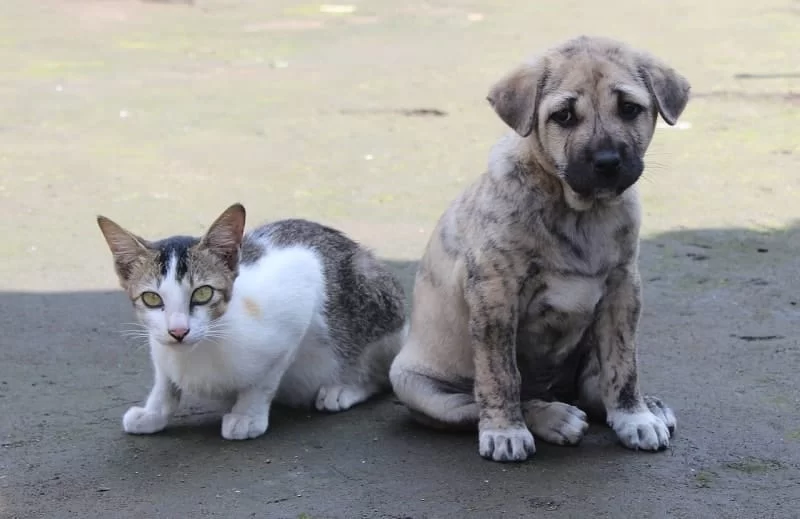- Why Socializing Dogs with Cats and Other Pets is Important
- Preparing Your Dog and Pets for Introduction
- Step-by-Step Guide to Socializing Dogs with Cats and Other Pets Safely
- Common Challenges and How to Overcome Them
- When to Seek Professional Help
1. Why Socializing Dogs with Cats and Other Pets is Important
Introducing a dog to cats and other household pets can feel daunting, but effective socialization is essential for creating a peaceful and safe environment for all animals. Proper socialization helps reduce stress, prevents aggressive behaviors, and strengthens bonds among pets. Dogs and cats are naturally different in communication styles—dogs are often more energetic and direct, while cats can be more cautious and subtle in their reactions. Without careful socialization, misunderstandings between species can lead to anxiety or conflict.
Beyond safety, socializing your dog with cats and other pets enriches their lives, providing mental stimulation and companionship. For example, many pet owners have shared heartwarming stories of once-tense dogs and cats eventually becoming inseparable friends, transforming the entire household atmosphere.

15601 W Bell Rd Suite #204, Surprise, AZ 85374, USA
See DetailsUnderstanding Individual Personalities
Every pet has a unique personality, and some dogs may be more prey-driven, while some cats may be more territorial. Recognizing these traits early on can guide the socialization process, ensuring it is tailored to each pet’s needs.
2. Preparing Your Dog and Pets for Introduction
Before bringing your dog and cats or other pets face to face, preparation is key. This stage involves both physical and mental readiness to set the foundation for a positive interaction.
Creating Safe Spaces
Ensure that your cat or smaller pets have a safe retreat where they can escape if feeling threatened. This could be a high perch, a separate room, or a gated area inaccessible to the dog. Having these safe zones reduces stress and allows the cat or other pet to explore at their own pace.
Training Your Dog
Basic obedience is critical. Commands like “sit,” “stay,” and “leave it” are invaluable during introductions. Additionally, teaching your dog to control their excitement helps prevent overwhelming the cats or smaller pets.
Health and Hygiene
Make sure all pets are up-to-date on vaccinations and parasite prevention. Health issues can complicate introductions, and a clean environment supports overall well-being.
3. Step-by-Step Guide to Socializing Dogs with Cats and Other Pets Safely
Step 1: Scent Introduction
Start by swapping bedding or toys between your dog and cats or other pets. This allows them to become familiar with each other’s scent in a non-threatening way, laying the groundwork for face-to-face meetings.
Step 2: Visual Introduction with Barriers
Use baby gates or pet barriers to allow pets to see each other without physical contact. Observe body language closely—relaxed postures, wagging tails (in dogs), or curious sniffing are good signs. Signs of stress such as hissing, growling, or intense staring should prompt a pause and calm reassurance.
Step 3: Controlled Face-to-Face Meetings
With the dog on a leash and the cat or other pet free to move, allow brief, supervised interactions. Keep sessions short and positive, gradually increasing duration as comfort builds. Reward calm behavior with treats and praise.
Step 4: Increasing Interaction Time and Freedom
As pets become more comfortable, allow more freedom during their interactions but continue monitoring. Never leave them unsupervised until you are confident that they can coexist safely.
Real-Life Example:
A pet owner from our community shared how their high-energy Labrador was carefully introduced to a shy house cat over several weeks. By using baby gates and short, positive meetings, the dog learned to respect the cat’s boundaries. Eventually, the cat even began approaching the dog for play, showing how patience and gradual introduction can work wonders.
4. Common Challenges and How to Overcome Them
Challenge: Dog’s Prey Drive
Dogs with a strong prey drive may instinctively chase cats or smaller animals. In this case, professional training and behavioral modification are often necessary. Use long leashes and distractions during introductions, rewarding calm behavior consistently.
Challenge: Territorial Aggression in Cats
Some cats may act aggressively when feeling their territory is threatened. Providing multiple safe spaces and vertical territory can help cats feel secure. Feliway diffusers, which release calming pheromones, may also reduce anxiety.
Challenge: Impatience and Rushing the Process
One of the biggest mistakes is rushing introductions. Every pet adjusts at their own pace. If progress stalls, take a step back and return to earlier, less stressful stages such as scent swapping or visual introduction.
5. When to Seek Professional Help
Despite best efforts, some dogs and cats or other pets may not get along without expert guidance. If you notice persistent aggression, stress, or fear, it’s wise to consult a professional trainer or veterinary behaviorist. Early intervention can prevent injuries and improve long-term harmony.
For tailored advice, behavior assessments, or to find the best products and services for socializing your pets, visit Hidden Brook Veterinary. Our team offers expert recommendations that fit your unique situation, helping you create a safe and happy home for all your pets.











